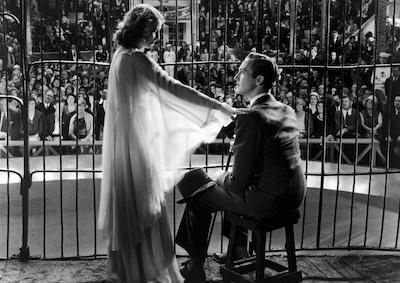King Kong (1933)
Remade several times, but never equaled, King Kong set a record for box office grosses on its opening weekend in early March 1933. The archetypal narrative of the maiden and the beast—Kong and Ann Darrow—this is more than a beloved movie: it has entered the realm of myth. Thomas Pynchon uses a probably apocryphal quote from Merian C. Cooper to Fay Wray in Gravity’s Rainbow: “You will have the tallest, darkest leading man in Hollywood,” a quote that speaks to the changing reception of Kong from seeing him as a monster to the revisionist view of Kong as metaphor for all forms of illicit relations. King Kong also energized the stop-motion animation genre–Willis H. O’Brien’s dinosaurs and ape were in development for over 10 years–, which is alive and well with the contemporary Wallace and Gromit.
DCP, b/w, 104 min. Director: Merian C. Cooper, Ernest B. Schoedsack. Screenwriter: James Ashmore Creelman, Ruth Rose. Cast: Fay Wray, Robert Armstrong, Bruce Cabot, Frank Reicher.
The Miracle Woman (1931)
Based on the play Bless You Sister, this would be the first of a dozen collaborations between screenwriter Robert Riskin and Frank Capra—and the second of five between Capra and the mighty Barbara Stanwyck, this time as Florence Fallon, a character allegedly inspired by real-life revival tent evangelist Aimee Semple McPherson. An inspiration to the masses, Florence masquerades as a miracle-maker with abandon, but at home, she’s not as happy-go-lucky as her public persona might suggest.
DCP, b/w, 90 min. Director: Frank Capra. Screenwriter: Jo Swerling, John Meehan, Robert Riskin. Cast: Barbara Stanwyck, David Manners, Sam Hardy, Beryl Mercer.






 Mobile Navigation
Mobile Navigation

